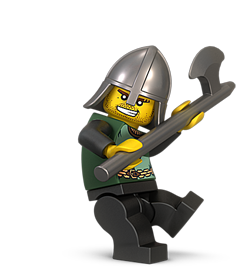If we were to re-engineer the ability scores of a classic adventure game like Dungeons and Dragons not around the abstract and eclectic wargaming roots that it emerged from, but instead around the concrete actions and themes of dungeon exploration, what might that look like?

This is not without precedence in old school games of course.
In TSR's Marvel Super Heroes (1984), every character's very first ability score is "Fighting" while in TSR's Gangbusters (1982), one of the six abilities defining every character is "Driving".
 |
| . |
This communicates a lot about what those games are all about, and aligns with the primary activities of the game.
So what would a stat block look like if it were built not from the classic formulations D&D has used since 1974 ("Strength, Intelligence, Dexterity, Wisdom, Constitution, Charisma"), but rather built around assumptions made about the fundamental activities of dungeon crawling?
Here's my crack at it:
Primary Abilities: [listed in order of utility]
- Observation - This ability score would replace listen checks, searching for secret doors or their triggers, detecting traps, etc. with bonuses/penalties by class & race.
- Charisma - This handy ability modifies those NPC reaction rolls, establishes retainer morale, and determines my maximum number of henchmen.
- Dexterity - Used to determine initiative, shoot a bow, balance on a ledge, climb a sheer wall, pick a lock, try to avoid being hit by dart trap, etc.
- Fighting - The character's ability to hit stuff, it increases by level (more quickly for fighters, slowly if at all for magic users). A bit of complexity is added based on weaponry, splitting the score for multiple attacks, etc.
- Strength - Modifies my weapon damage. Used as a raw score, it determines probability for opening stuck doors, bend bars / lift gates and how much the character can lift.
- Constitution - This would stand in for hit points. Increases would be awarded by level depending on class.
- Aura [hate that name] - The character's magical attunement, it not only informs spell casting, but also detection of magical effects and resistance to those same. Clearly the prime requisite for magic users, it would determine the maximum spell level that a character could learn. It would increase by level, based on class.
Secondary Abilities:
- Stealth - Derived from Observation and Dexterity, negated by carrying light and penalized based on how much is carryied (including armor), this is the standard sneaking through the dungeon ability. Take the lowest Stealth of any member of the party and you've got your chance to achieve surprise.
- Load - Derived from Strength and Constitution, it measures how much treasure or gear can be carried around before taking penalties to Fighting, Dexterity, and Stealth.
So a character with ability scores built with dungeoneering in mind, each score rolled 3d6 in order of course, might look like this:
Reinhardt, Level 1 Explorer 

Obs 13 -- 13% chance to passively notice secret doors and traps
Cha 14 -- modest bonus of +1 to reaction
Dex 6 -- [descending AC], needs a d20 roll of 14 to hit an AC 10 with ranged attacks
Fight 13 -- needs a d20 roll of 7 to hit an AC 10
Str 10 -- no damage bonus, 10% chance to bend bars
Con 16 -- (divided by two?) = hit points
Aura 4 -- roll 4 or under on d20 to save vs spell
Steal 10 -- 10% chance to surprise
Load 13 -- >65 pounds of weapons, armor, gear and treasure = encumbered, >130 pounds = heavily encumbered (-5)
This is a silly exercise of course.
The Arneson & Gygax formulation has served just fine for the past four decades and certainly doesn't need to be overhauled at this late hour. Still, it's fun to imagine how things may have developed differently with just a few minor changes to the basic organization of characters.
Would distinct character classes or party roles have emerged, or would there just be variations on the basic dungeon-explorer theme?
On the other hand, if that original template for role-playing characters had been less abstract, more complex, and more focused on the core activities of the game, would it have proven less versatile and ultimately less durable and engaging in the long run? Would D&D have died out after a ten years or simply remained utterly obscure?
Perhaps the four-decade long endurance of D&D (and its many offspring) rests not in the specificity of its ability to simulate action, but rather in the very abstraction of its system.
| Rube Goldberg reminds us that greater complexity is always better ... isn't it? |
In the face of longer, more specific spell descriptions, longer, more detailed character stat blocks, and longer monster descriptions from OD&D to AD&D to 3rd Edition, the strength of abstraction makes a pretty interesting case for the continued place of minimalist, rules-lite sets like Risus, Labyrinth Lord, and Dagger for Kids within the hobby.

No comments:
Post a Comment